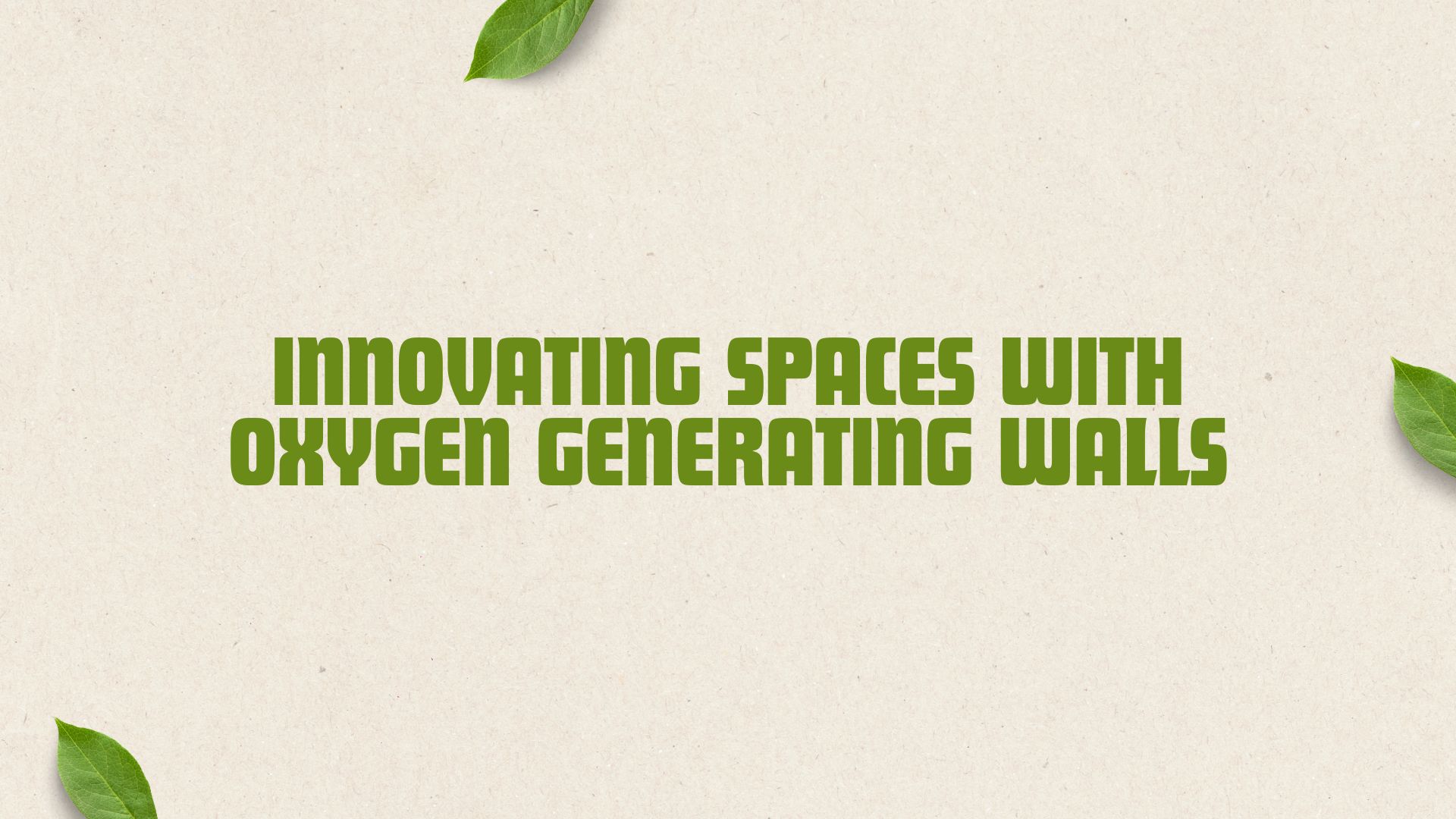Innovating Spaces with Oxygen Generating Walls
Innovating Spaces with Oxygen Generating Walls
Transform your space with oxygen generating walls! These innovative structures provide not only a stunning visual appeal but also significantly improve air quality. In this blog, we will explore the benefits, technologies, and aesthetics of oxygen generating walls while highlighting their importance in sustainable architecture and biophilic design. You'll learn about the mechanisms behind these walls, their health benefits, and how you can implement them in your environments.
1. What are Oxygen Generating Walls?
Oxygen generating walls, often referred to as living walls, are vertical garden installations that utilize various plants and advanced technologies to convert carbon dioxide into oxygen. These walls essentially act as natural air filters while bringing greenery into urban and indoor spaces. The primary purpose of oxygen generating walls is to enhance the breathable atmosphere, making any area not only more appealing but healthier.
The effectiveness of these walls hinges on careful plant selection and innovative air cleaning technology. Different species of plants are chosen based on their air-purifying abilities and compatibility with the installation's environment. These plants work in tandem with specially designed spaces that allow for optimal growth and air circulation, resulting in a vibrant ecosystem that produces oxygen while filtering pollutants.
2. Exploring the Beauty of Biophilic Design
Biophilic design is a concept that focuses on creating environments that foster a connection between people and nature. This design approach holds significant relevance, particularly in urban settings where natural elements are often scarce. Oxygen generating walls exemplify this philosophy, integrating nature within architectural designs seamlessly.
For example, contemporary office buildings and residential complexes are increasingly incorporating these walls to enhance their aesthetics and moods. In spaces dominated by concrete and artificial decor, oxygen generating walls contribute a refreshing touch of greenery, fostering a soothing atmosphere while boosting the occupants' well-being. By inviting nature indoors, these installations promote a pleasant environment that can enhance creativity and reduce stress levels.
3. The Health Benefits of Oxygen Generating Walls
Indoor air quality is vital for health, and oxygen generating walls play a key role in improving it. These living walls absorb carbon dioxide and other harmful VOCs (volatile organic compounds), filtering out pollutants while releasing fresh oxygen. As a result, the air quality surrounding oxygen generating walls can be significantly better compared to conventional indoor spaces.
The health benefits extend beyond just better air quality. Improved indoor environments are linked to decreased stress, enhanced cognitive function, and increased productivity. Studies have shown that workplaces featuring indoor plants and biophilic designs report higher employee satisfaction and well-being. Therefore, incorporating oxygen generating walls is a smart investment in both aesthetics and health.
4. Sustainable Architecture: The Role of Oxygen Generating Walls
Sustainable architecture plays an essential role in addressing pressing environmental challenges like climate change and urban pollution. Oxygen generating walls directly contribute to sustainable practices by lowering energy consumption and supporting biodiversity. By incorporating natural elements into modern architecture, we can reduce reliance on mechanical systems for air purification.
Furthermore, the plants used in living walls promote biodiversity, supporting local ecosystems while enhancing urban resilience. This sustainable approach not only benefits the environment but also enriches the lives of those residing or working nearby. Oxygen generating walls exemplify how innovative architectural design can align with sustainability goals, making them a crucial element of modern urban planning.
5. Technologies That Power Oxygen Generating Walls
Innovation drives the effectiveness of oxygen generating walls, as advanced technologies are employed to ensure their functionality and aesthetics. For instance, modern irrigation systems, such as drip irrigation, facilitate optimal water distribution while reducing waste. Additionally, specialized nutrient solutions can be delivered directly to plants to promote healthy growth and enhance air-cleaning capabilities.
Successful projects worldwide showcase these technologies in action. For example, urban buildings in cities like Singapore and London have integrated oxygen generating walls as a central design element. These projects demonstrate how air cleaning technologies not only improve the surrounding environment but encourage locals to embrace green living in everyday life.
6. Implementing Oxygen Generating Walls in Your Space
If you're looking to incorporate oxygen generating walls into your space, several practical considerations will guide your design. Start by selecting appropriate plants that match your environmental conditions, such as light levels and humidity. Popular choices include ferns, succulents, and various flowering plants known for their air-purifying abilities.
Once you've chosen your plants, consider the installation techniques that best suit your space, whether it's a vertical planter, hydroponic system, or freestanding structure. Lastly, regular maintenance is crucial to ensure the health of your living wall. This involves monitoring water levels, replacing plants when needed, and organic pest control to preserve the integrity and functionality of the wall over time.
By implementing oxygen generating walls, you can bring the revitalizing power of nature into your environment, making it more beautiful and healthier while adhering to sustainable practices.
Conclusion: Share Your Thoughts on Oxygen Generating Walls
Oxygen generating walls represent a stunning intersection of aesthetics, health, and sustainability, making them an appealing choice for modern architecture. By improving air quality and enriching our environments, these installations serve as a testament to the benefits of biophilic design. We encourage you to share your thoughts on oxygen generating walls! Have you implemented a living wall in your space? What are your insights on their benefits? Leave your comments below!
Frequently Asked Questions
What are oxygen generating walls?

How do oxygen generating walls work?

What is biophilic design?

What are the health benefits of oxygen generating walls?

How do oxygen generating walls contribute to sustainable architecture?

What technologies are used in oxygen generating walls?

What types of plants are recommended for oxygen generating walls?

What installation techniques can be used for oxygen generating walls?

What maintenance is required for oxygen generating walls?

Can oxygen generating walls be incorporated into residential spaces?

